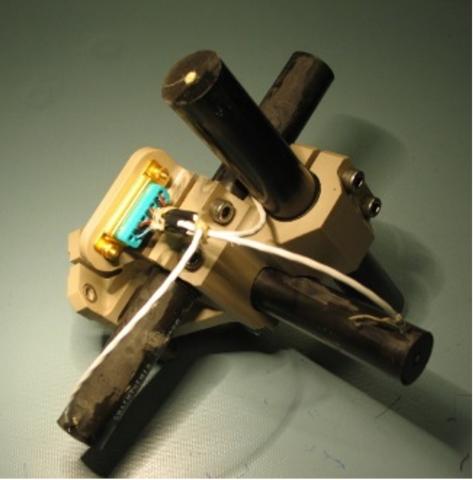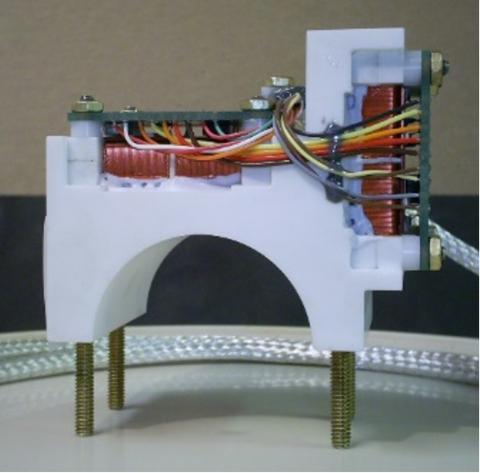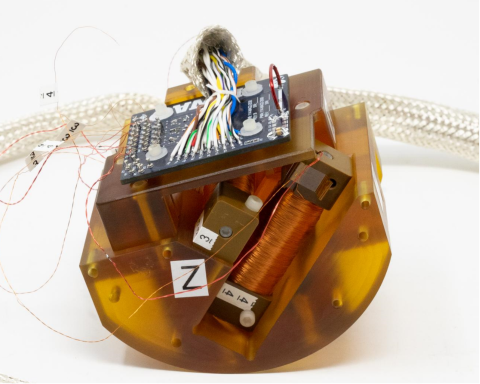Magnetometers provide essential magnetic field measurements for solar-terrestrial and space physics research, for space exploration, and for monitoring space weather. Science missions have often needed a search coil magnetometer for high frequencies and a fluxgate magnetometer for the static field and low frequencies. Although one or both instruments have flown on a large percentage of all NASA heliophysics missions, the underlying instrument designs have developed only modestly beyond those built in the 1980s. The two instruments interfere with each other – the search coil detecting the drive signal from the fluxgate and the ferromagnetic core providing magnetic gain in a search coil distorting the field measured by the fluxgate. Therefore, the two sensors are typically each mounted on separate deployable booms that affect spacecraft control and can impinge the field of view of other instruments. CHIMERA is a hybrid magnetometer that simultaneously operates as both a search coil and a fluxgate. The two sensing techniques have been shown to operate simultaneously without interfering in a hybrid sensor engineered to accommodate both effects and can be extracted independently with appropriate signal processing.

The HTIDeS CHIMERA project developed a flight-ready hybrid magnetometer to enable the investigation of multiple science questions under the NASA Heliophysics overarching science goal to: “Advance our understanding of the connections between the sun, Earth, the planetary space environments, and the outer reaches of our solar system”. The ability of CHIMERA to measure the entire frequency range of interest (DC to ~10 kHz) with a single compact sensor requiring only one deployable boom is particularly well suited to measuring these waves on future small spacecraft missions including nanosatellites (Figure 1).
The CHIMERA team from the University of Iowa consists of the early career Principal Investigator, Dr. David Miles, Co-Investigator Dr. George Hospodarsky, and a team of undergraduate and graduate students, post-Doctoral researchers, and early-career engineers, with a goal of training the next generation of Heliophysics research scientists and technologists.

At the conclusion of the three-year effort, a prototype of a fully integrated hybrid magnetometer with closed-loop magnetic feedback was developed. The new sensor design combines elements of both classic fluxgate and searchcoil sensors to simultaneously use both sensing mechanisms (Figure 3).



A rideshare opportunity became available on the ACES-II suborbital rocket mission (PI: Scott Bounds), and in November 2022 CHIMERA flew to 406 km and intersected an auroral arc (Figure 4). A preliminary comparison of the CHIMERA data against the primary fluxgate magnetometer on the rocket suggests that CHIMERA worked as intended – the scientific analysis is ongoing. Lessons learned from the CHIMERA development and the ACES-II rocket campaign are being incorporated into a follow-on technology demonstration project called MAGnetometers for Innovation and Capability (MAGIC) on the TRACERS SMEX satellite mission.
CHIMERA offers the potential for high fidelity AC and DC magnetic field measurements from compact and low-cost spacecraft. This helps enable one of the next critical opportunities for scientific discovery from magnetospheric constellation (MagCon) type missions of 30 or more spacecraft.

